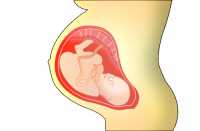
05 Dec Kicking in Womb Helps Babies Develop Sense of Their Own Body
MedicalResearch.com Interview with:
 Kimberley Whitehead
Kimberley Whitehead
Neuroscience, Physiology & Pharmacology
University College London
MedicalResearch.com: What is the background for this study?
Response: Fetuses move a lot! Very similar movement patterns are seen in both pre-term and full-term newborn infants, but their function is unclear. In animals such as rats, spontaneous movement and consequent feedback from the environment during the early developmental period trigger specific patterns of electrical activity in the brain that are necessary for proper brain mapping.
MedicalResearch.com: What are the main findings?
Response: For the study, published in Scientific Reports (doi.org/10.1038/s41598-018-35850-1), we measured brainwaves produced when newborn babies kick their limbs during rapid eye movement (REM) sleep, finding that fast brainwaves – a brainwave pattern typically seen in neonates – fire in the part of the brain that in adults receives information from that body part.
For example, the movement of a baby’s right hand causes brainwaves to fire immediately afterwards in the part of the brain that processes touch for the right hand. The size of these brainwaves is largest in premature babies, who at that age would usually still be in the womb. The fast brainwaves evoked by the movement disappear by the time babies are a few weeks old suggesting that their job is done.
MedicalResearch.com: What should readers take away from your report?
Response: The findings suggest that fetal kicks in the late stages of pregnancy – the third trimester – help to grow areas of the brain that deal with sensory input, and are how the baby develops a sense of their own body. Therefore the kicks a mother feels from her unborn child may allow the baby to ‘map’ their own body and enable them to eventually explore their surroundings.
MedicalResearch.com: What recommendations do you have for future research as a result of this work?
Response: Future longitudinal studies should investigate the influence of postnatal experience on movement-related cortical activity patterns. For example, a study could compare infants who were all conceived approximately nine months ago, but some of whom were born pre-term and therefore spent the later part of the typical gestational period outside of the womb. We believe this might be relevant, because we showed in a previous study (published in Sleep) that infants with more postnatal experience had smaller fast brainwaves compared to infants with the same amount of time since conception, but less of that time spent outside of the womb.
MedicalResearch.com: Is there anything else you would like to add?
Response: All of our research relies upon families agreeing to take part and we are extremely grateful to the parents and babies who make this big contribution.
It is important to note that this research was intended to address a neuroscientific question, rather than a health question. Although this research might have clinical implications, to address these would require further studies.
Any disclosures? None of the authors have any disclosures.
Citation:
Kimberley Whitehead, Judith Meek, Lorenzo Fabrizi. Developmental trajectory of movement-related cortical oscillations during active sleep in a cross-sectional cohort of pre-term and full-term human infants. Scientific Reports, 2018; 8 (1) DOI: 10.1038/s41598-018-35850-1
[wysija_form id=”3″]
[last-modified]
The information on MedicalResearch.com is provided for educational purposes only, and is in no way intended to diagnose, cure, or treat any medical or other condition. Always seek the advice of your physician or other qualified health and ask your doctor any questions you may have regarding a medical condition. In addition to all other limitations and disclaimers in this agreement, service provider and its third party providers disclaim any liability or loss in connection with the content provided on this website.
Last Updated on December 5, 2018 by Marie Benz MD FAAD
